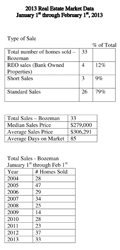Understanding Cap Rates for Investment Properties
With many investors returning to the market and buying up homes to use as income producing properties it’s prudent to discuss a simple calculation that many investors use to evaluate properties. Individuals looking to purchase investment properties may often hear the term Cap Rate. Short for capitalization rate, the Cap Rate is also known as the annual rate of return. The formula for determining the Cap Rate is as follows: Net Operating Income divided by Purchase Price = Cap Rate
The first step in determining the Cap Rate for a particular property is to establish its yearly Net Operating Income. To calculate Net Operating Income, an investor must take the potential Gross Income a property may generate in a year and then deduct taxes, insurance, and any maintenance or management fees. What’s left is the NOI. Once the NOI is calculated, the investor should divide that number by the purchase price of the property. This final number is the Cap Rate. To illustrate determining a Cap Rate, let us look at this example. An investor purchases a residential property for $200,000 and rents the property for $1,400 a month. They hire a management company and pay them 10 percent of their gross rents, or $1,680 per year. The taxes cost them approximately $2000 per year, and insurance is another $700. All figures are approximate for this example; actual taxes, insurance, and management fees will vary.
The property brings in $16,800 gross rent per year ($1,400 per month multiplied by 12 months), but after deducting management fees, taxes, and insurance, the property generates $12,420 per year net. $12,420 divided by $200,000 is .0621, or 6.21 %. This is the investor’s Cap Rate or yearly rate of return on their investment.
Two other factors of Real Estate investment that the Cap Rate does not take into account is property appreciation and the tax benefits of investing in Real Estate. Even though Real Estate Markets will fluctuate up and down, Real Estate has historically proven to appreciate over the long term. This appreciation will increase the actual rate of return for the investment property.
These are the basics of understanding Cap Rates. Once investors fully understand the rate of return they can expect to make on an investment and have the ability to calculate the Cap Rate, they are in a position to compare multiple properties against one another as well as comparing them to other investment vehicles such as stocks and bonds.
I have also included recent sales data for the first month of 2013. The included data reflects sales of homes on both less than and more than one acre in the greater Bozeman area, including Four Corners, Gallatin Gateway, Bridger Canyon, and Bozeman city limits. The data includes home sales reported through the local Southwest Montana MLS, and does not include private party sales, Condominiums, or Townhouses.
Tim Ford is a Realtor ® with Vellinga Real Estate in Bozeman Montana. He can be contacted at 406-209-1214.